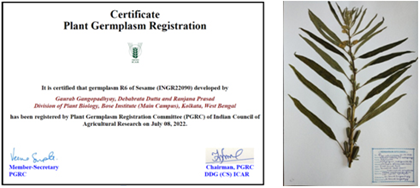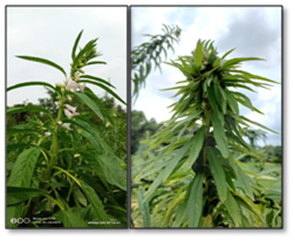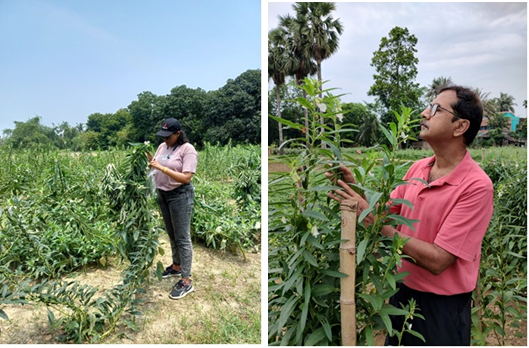Researchers have identified a new microbe responsible for an unusual disease affecting the sesame fields of Midnapore in West Bengal.
Sesame, the Queen of Oil, is a primordial oilseed crop since the remnants of sesame seeds were discovered at Harappa and Mohenjodaro. Sesame oil is excellent from a medicinal point of view. It contains antioxidants, and beneficial for heart patients. Unfortunately, we do not use it as the principal edible oil. The Indian sesame varieties need significant improvement so that their benefits can be harnessed.
Prof. Gaurab Gangopadhayay, and his group at the Department of Biological Sciences, Bose Institute, an autonomous institute of the Department of Science and Technology worked on this aspect of the queen of oil for more than a decade and they have successfully developed a few improved varieties of sesame through molecular marker-assisted breeding.
However, in the last few years, Prof. Gangopadhyay and his group found an unusual disease in the sesame fields of Midnapore, West Bengal farmers' plots during their visits to East and West Midnapore districts. After attaining the flowering and fruiting stage, the infected sesame plants are reverting to their vegetative stage and the white flowers with pinkish tinges turn green.
After years of intensive research, Prof. Gangopadhyay identified a new microbe residing in the gut of pests like leafhoppers and plant-hoppers, a phloem sucker, as the causative agent of this severe disease.
The microbe is a cell wall lacking Mollicutes bacteria, called Candidatus Phytoplasma. These bacteria thrive in the nutrient-rich phloem and sieve cells of plants. The transmission of these pathogens takes place primarily through phloem feeder insects (leafhoppers, plant-hoppers, psyllids, and dodders), which are known to infect many commercially valuable crops like Catharanthus, tobacco, maize, and grapevine. The manifestations of the disease are disfigurement and virescence of the floral parts, giving a leafy appearance.
Considering the lack of knowledge of Phytoplasma infestation, this study explored the impact of this bacterium on the interconnected metabolic pathways contributing to disease symptom development in sesame. The paper was recently published in the Plant Molecular Biology Reporter in 2024. This multi-target approach would be valuable for studying complex biological systems and may help understand the sesame plant's molecular responses to Phytoplasma infection.
Publication Link: https://doi.org/10.1007/s11105-024-01440-x

































